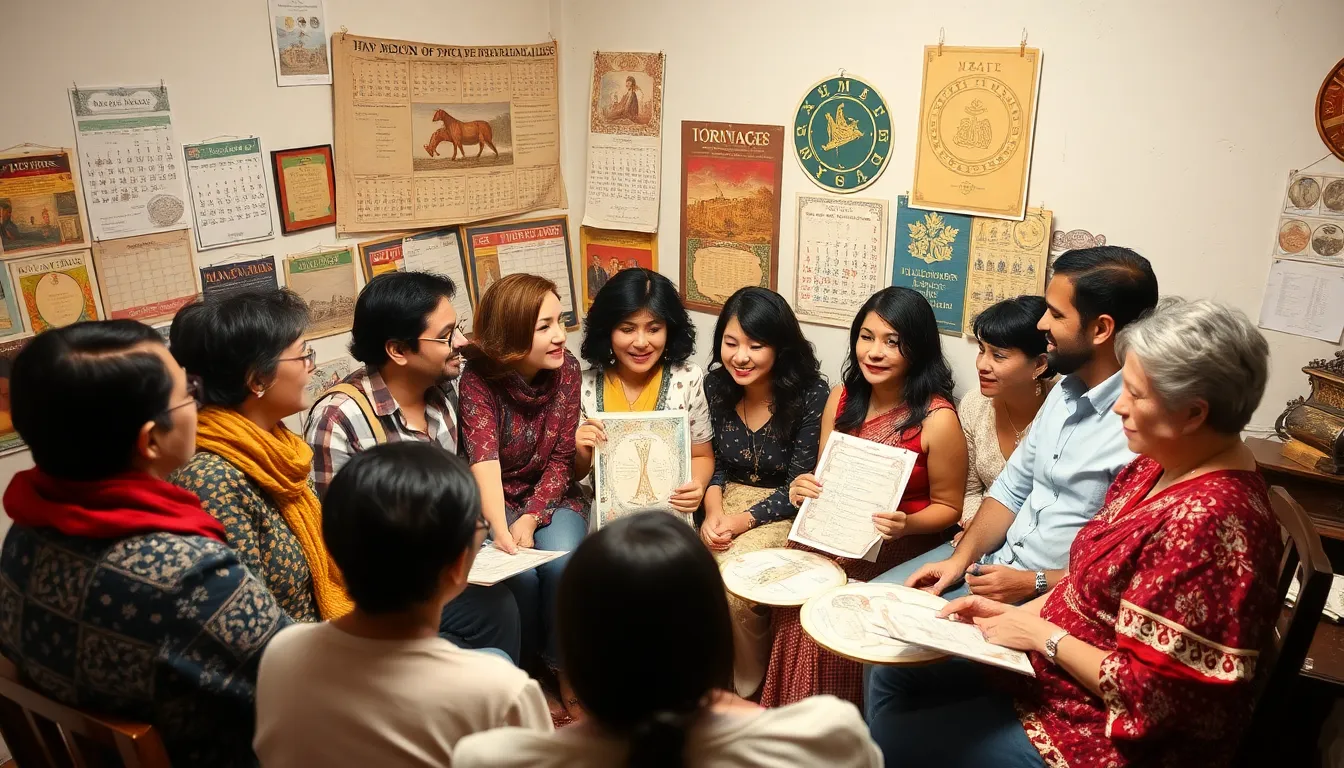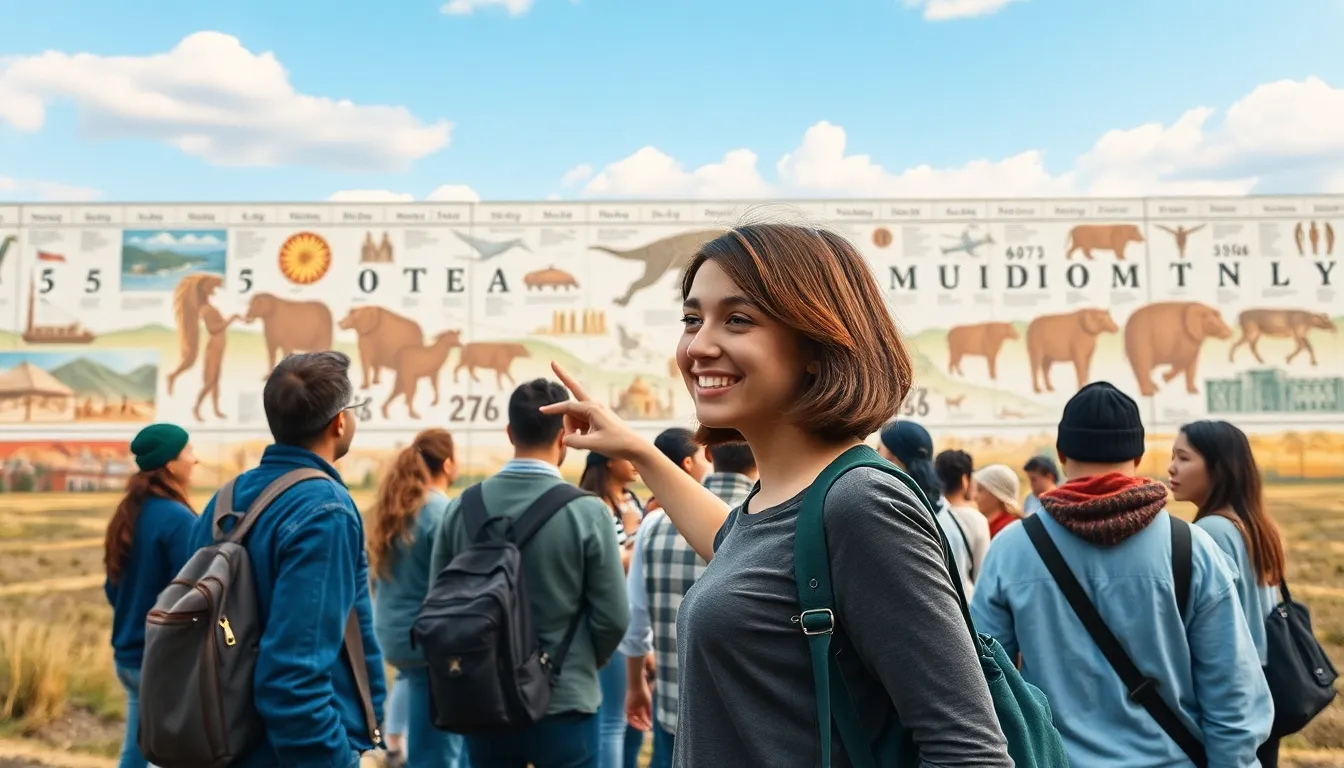Ever wondered how long a millennium really is? Spoiler alert: it’s not just a fancy word to impress your friends at parties! A millennium packs a whopping 1,000 years into its time capsule, making it the ultimate time traveler’s dream. Imagine all the history, fashion faux pas, and questionable hairstyles that could fit into that span.
Table of Contents
ToggleUnderstanding a Millennium
A millennium spans exactly 1,000 years. This time frame serves as a significant marker in human history, allowing for substantial cultural, technological, and societal shifts. During a millennium, civilizations may rise, fall, and evolve, making it a vital concept for historians and scholars.
Approximately every decade, dramatic changes occur worldwide. In a millennium, these shifts accumulate, leading to major advancements in various fields such as science, art, and politics. For example, considering the 1,000-year period from 1000 to 2000, humanity witnessed the emergence of the Renaissance, the Industrial Revolution, and the Digital Age.
Cultures also transform within this time frame. Language, traditions, and social norms continuously evolve, demonstrating the dynamic nature of human society. Events that take place over a millennium can reshape entire nations, influencing generations to come.
Simply put, a millennium encapsulates vast periods of human experience, making it an essential unit for understanding history’s progression. Each distinct century within a millennium contributes uniquely to the overall narrative, offering insights into how societies adapt and change. As such, recognizing the depth and breadth of a millennium enhances the appreciation of historical developments.
A millennium functions as a critical lens through which to view extensive changes across time. It provides context for both minor and significant events that shape human existence, underscoring the importance of each year within this expansive framework.
Defining Time Periods

Understanding time periods hinges on defining key units. A millennium, as noted, spans 1,000 years. It encompasses immense historical developments.
The Concept of a Year
A year marks one complete revolution of the Earth around the Sun, which takes approximately 365 days. This foundational unit underpins calendars worldwide. Traditionally, a year serves as a reference point for various cultural and social events. Many societies celebrate milestones like anniversaries, holidays, and agricultural cycles based on this time frame. Each year contributes to the rich tapestry of history by encapsulating significant events. Notably, leap years adjust this duration, maintaining synchronization with seasonal cycles.
Different Calendars
Calendars vary significantly across cultures. The Gregorian calendar, which is widely used today, consists of 12 months, totaling 365 days in a common year. Meanwhile, the Islamic calendar operates on a lunar cycle, containing 354 or 355 days, impacting the timing of religious observances. Other calendars, such as the Jewish and Chinese calendars, incorporate both solar and lunar elements. Each system reflects cultural values and historical contexts, influencing how societies perceive and utilize time. Understanding these calendars highlights the diversity in marking the passage of years.
Calculating a Millennium
A millennium represents a span of 1,000 years, providing a clear metric for understanding extensive periods of time. This measurement integrates various epochs, generations, and human experiences.
Breakdown of Years
A millennium consists of ten centuries. Each century includes 100 years, serving as a basic unit for organizing historical timelines. Understanding this structure illuminates how changes accumulate over time. For instance, notable shifts in culture and technology often manifest prominently within each century. Events like the fall of the Roman Empire and the rise of modern democracy can be placed accurately within this framework. Each year within a century therefore contributes significantly to the broader narrative of a millennium.
Historical Significance
The historical significance of a millennium encompasses the broad strokes of human development. Major transformations occur, shaping societies over these vast periods. Critical advancements in areas such as science, technology, and art often emerge within a millennium. The rise of civilizations reflects this dynamic change, with notable events such as the Industrial Revolution marking pivotal moments. By analyzing a millennium, historians gain a comprehensive view of trends and cultural shifts that define human history. Each 1,000-year interval tells a unique story, revealing the interconnectedness of human experiences across time.
Cultural Perspectives on Millennia
Cultural perceptions of a millennium reveal its profound impact on human societies.
Impact on Civilizations
Civilizations often experience significant transformations across a millennium. Historical records indicate that major shifts in governance, religion, and technology can emerge within this timeframe. The transition from agrarian societies to urban civilization highlights such progress. During the past millennium, the fall of empires and the rise of new nations exemplify this phenomenon. Innovations like the wheel and the internet illustrate milestones that redefine the societal fabric. Cultural practices also evolve, influenced by demographic changes and migrations. Over centuries, art and philosophy reflect the values and challenges of their times, making them essential for understanding civilization’s journey.
Celebrations and Observances
Celebrating milestone years fosters communal unity. Various cultures mark millennia with festivals and reflection, recognizing past accomplishments and future aspirations. For example, the turn of the year 2000 brought widespread global celebrations, with fireworks and gatherings symbolizing hope and renewal. Many cultures hold special ceremonies to honor the passage of time, blending traditional customs with contemporary practices. Significant anniversaries serve as reminders of shared history and encourage collective memory. Rituals might include storytelling, feasting, and artistic expressions, emphasizing the importance of continuity in cultural identity.
A millennium represents a significant chapter in the story of human history. Spanning 1,000 years, it allows for profound transformations that shape civilizations and cultures. Each century within this period contributes to a rich tapestry of advancements and shifts that define societal evolution.
Understanding a millennium provides valuable insights into the interconnectedness of human experiences. It highlights the importance of recognizing milestones and celebrations that foster communal identity. As societies continue to evolve, the lessons learned from past millennia remain relevant, guiding future generations in their journey through time.




